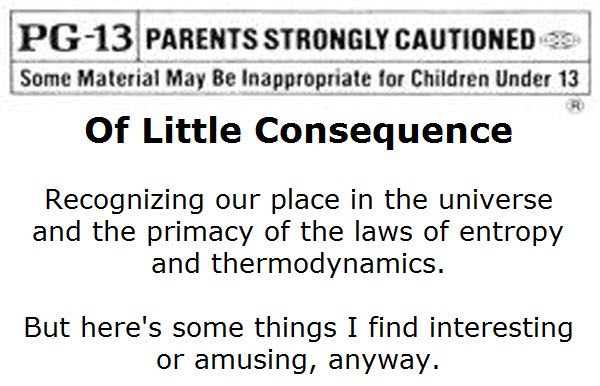If you've been to a large IMAX Theatre lately, the film being projected on the screen is illuminated by an extremely-high-power xenon short-arc lamp, usually of 15,000 Watts.
The lamp itself is made of fused pure quartz -- the only material that can withstand the high pressures, temperature and high-level light outlet. The electrodes at each end are made of thorium-doped tungsten, and the assembly needs to be circulating water-cooled. The quartz lamp itself is filled with xenon (Xe, a heavy, colorless, odorless noble gas, atomic weight 54), at a pressure of almost 400 psi.
The color spectrum of these lamps is very similar to normal sunlight (very desirable) but with some specific high peaks in the infrared region. In operation, they are similar to high-powered welder's arcs and even momentary unfiltered viewing of the lamp in operation can be enough to cause irreparable eye damage. In practice the entire lamp assembly in enclosed in an explosion and fireproof refrigerator sized housing, with "welder's goggle-strength" viewing ports built in. During the full-power operation of the lamp, significant heat, IR and IV output and ozone production occurs, so other needed cooling and venting, shutdown mechanisms, etc., are also included in the lamp cabinet.
Lamps are shipped to the customer in multiple-walled, heavily damped and cushioned containers, with the lamp itself inclosed in an explosion-shielding sub-container. (Think of a 400 PSI pressurized glass bomb, and what would happed if it was banged hard again something.)
Once delivered, technicians upack the lamp from its packing and container, and install the lamp in the cabinet: all while wearing a head-to-toe 'bomb-protective' type suit, in case of lamp failure or accident. The quartz lamp cannot be touched directly by hand in any place, since any skin oils on the quartz will cause a process called 'devitrification', which can lead to spot darkening on the lamp and in the worst cases, catastropic lamp failure. (This is not a good thing: a nice-sized explosion of glass shards of over 1500 degrees F).
Once delivered, technicians upack the lamp from its packing and container, and install the lamp in the cabinet: all while wearing a head-to-toe 'bomb-protective' type suit, in case of lamp failure or accident. The quartz lamp cannot be touched directly by hand in any place, since any skin oils on the quartz will cause a process called 'devitrification', which can lead to spot darkening on the lamp and in the worst cases, catastropic lamp failure. (This is not a good thing: a nice-sized explosion of glass shards of over 1500 degrees F).
When the lamp ages and nears the end of its useful life (1000-2000 hours depending on usage) the operator technicans can tell by tracking the number of hours in service, the percentage of rated output, and the amount of current needed to produce the needed level of illumination. When this happens, the technicians need -- of course -- to power down the lamp/power supply, wait until all cools to room temperature and no ozone build-up is recorded; then the cabinet is opened, the 'bomb-suited' technicians remove the lamp and replace it. The used lamp could technically just be thrown-away: all its component part are innocuous and inert and pose no environmental hazard. Except that they're pressurized bombs made of glass, waiting to go off. As a result, the used lamps are repacked in their original shipping containers and returned to the manufacturer, who (remotely) destroys them. (Incidently, no recycling: none of the sigificant parts such as the tungsten electrodes or the fused quartz globe are reusable).
So, that's one of the behind-the-scenes things at your IMAX (assuming you've got one of the big ones). There are multiple kinds of IMAX theatres, processes etc. -- but that is as they say, another story. :)
Photo courtesy of Wikipedia Commons, attribution: Atlant



No comments:
Post a Comment